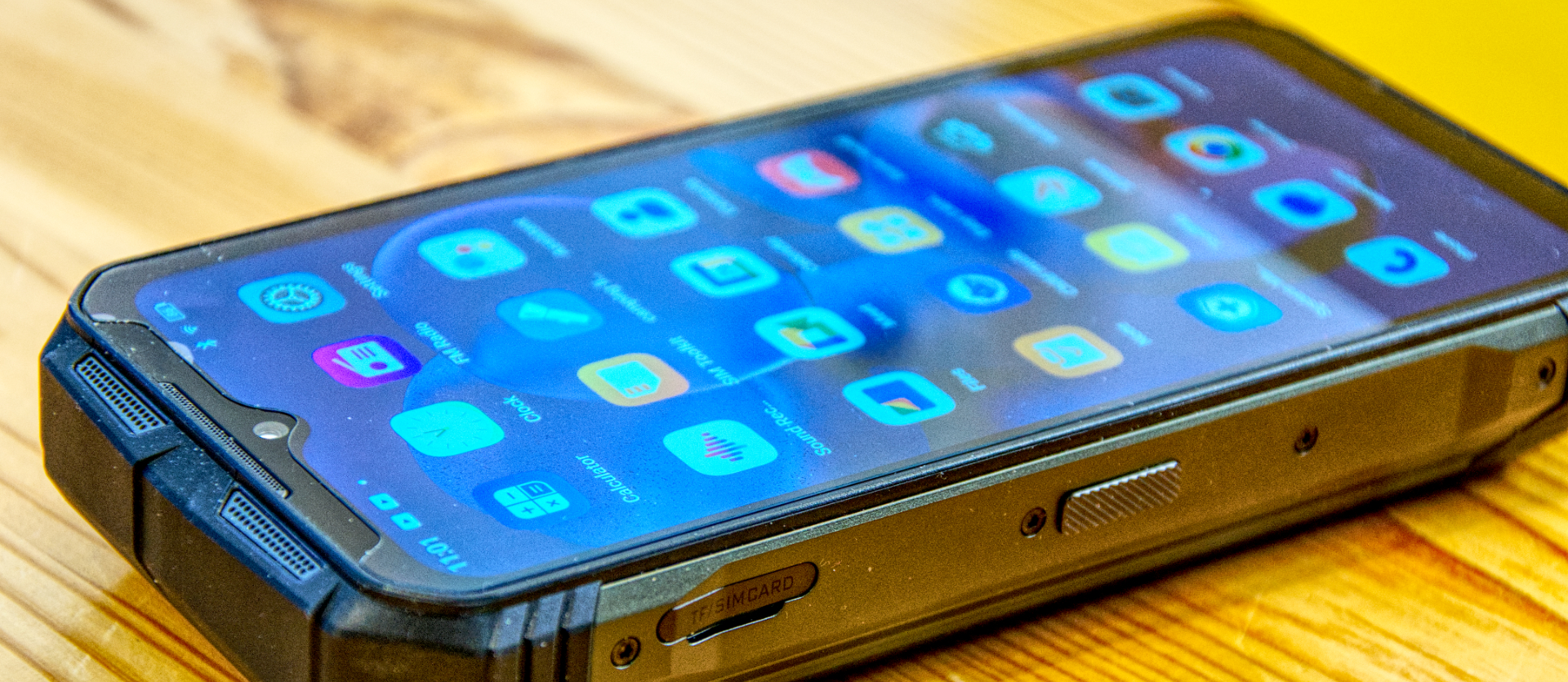
30-second review
Coming on the back of the Doogee V Max and the S100, the S100 Pro sits somewhere between these two products in its specification.
Physically it's an identical size as the V Max and packs the same 22000mAh battery in that phone, but the same processor as the S100.
The problem with the Helio G99 chip used in the S100 and S100 Pro is that it doesn’t support 5G, and it doesn’t offer the graphical performance of the Dimensity 1080 used in the V Max.
In short, the differences between the S100 Pro and the original S100 are the much bigger battery and a 130-lumen flashlight. But beyond those features, the differences are remarkably subtle.
The price difference is about $80, but you get the same camera configuration exactly in the S100 Pro.
One disappointment of this design is that it suffers the same flaw as the V Max. While it has a huge battery, the 33W charging means it takes a long time to fully recharge. Oddly, the original S100 had half the battery capacity but 66W charging, allowing it to fully charge in a quarter of the time.
In summary, the S100 Pro is more of a watered-down V Max than a Pro version of the S100.
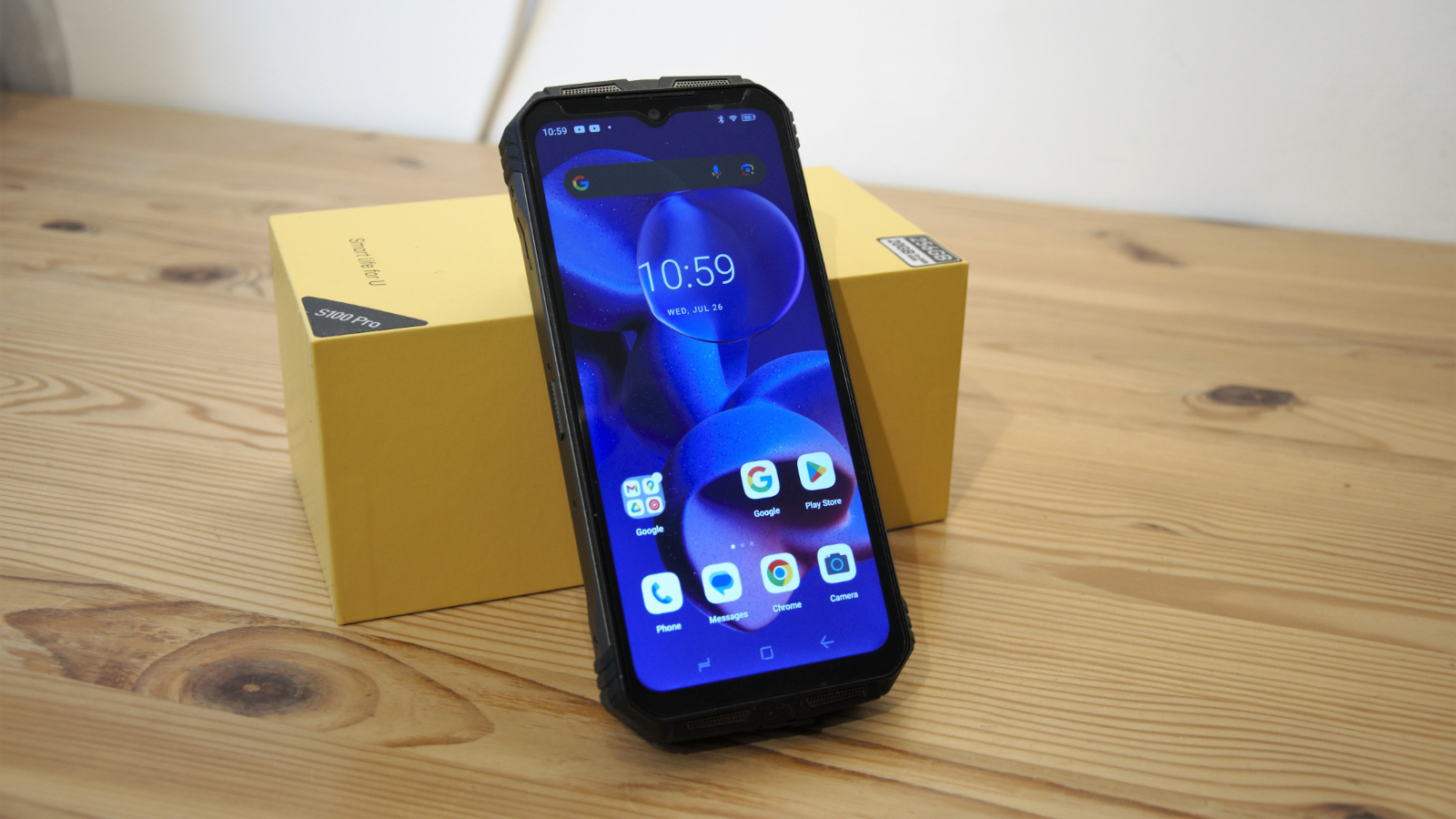
Doogee S100 Pro: price and availability
- How much does it cost? $359/£279.25/€322.55
- When is it out? It is available now
- Where can you get it? You can get it in most regions direct from Doogee or from an online reseller such as Amazon.
Given its specification, the S100 Pro looks like something of a bargain. It’s much cheaper than the Doogee V Max and only around $40 more than the S100.
We also noticed that if you buy it from an online retailer like Amazon, you can get it even cheaper than the direct-from-Doogee price.
Whatever source you get it from, the S100 Pro is plenty of phone for the money.
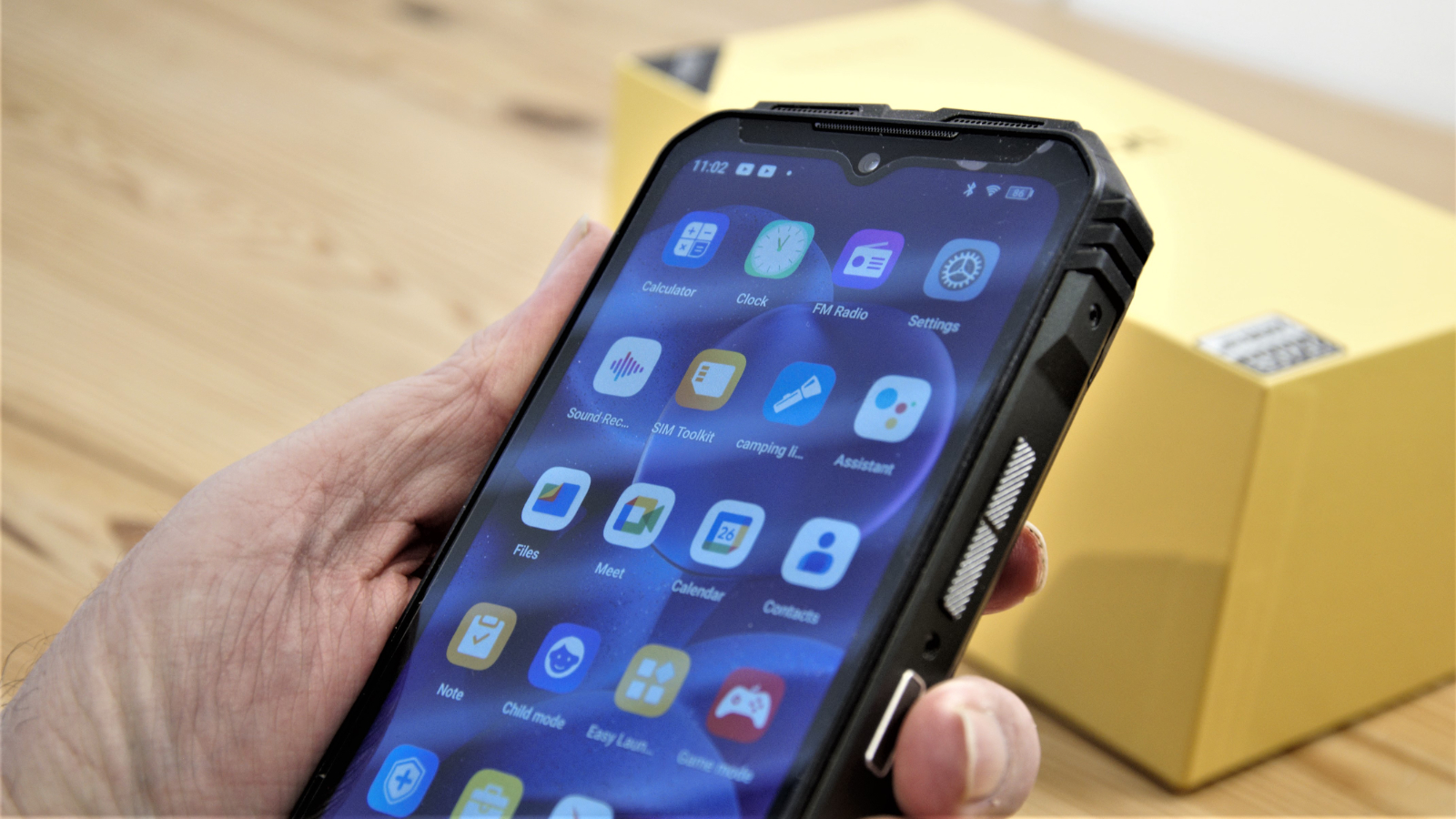
- Value score: 4/5
Doogee S100 Pro design
- Chunky monkey
- By-the-numbers layout
- Camping flashlight
The Doogee S100 Pro that was sent to us for review came with the following hardware:
CPU: Helio G99 / Octa Core / 2.2GHz / 6nm
GPU: ARM Mali-G57 MC4
RAM: 12GB LPDDR4X
Storage: 256GB
Screen: 6.58-inch 120Hz IPS LCD
Resolution: 1080 x 2408
SIM: Dual Nano SIM (+microSDXC up to 2TB)
Weight: 548g
Dimensions: 178.5 x 83.1 x 27.3 mm
Rugged Spec: IP68, IP69K and MIL-STD-810H
Rear cameras: AI Triple camera (108MP+20MP+16MP)
Front camera: SONY 32MP Front Camera
Networking: WiFi 6, Bluetooth 5.2
OS: Android 12
Battery: 22000 mAh
Those expecting Apple-level styling are going to be disappointed in the S100 Pro. That’s because it’s all about functionality and very little elegance. Looking at the dimensions, this is the same structure as the V Max, which is needed for the massive battery. Although curiously, the V Max weighed 533g whereas the S100 Pro is quoted at just 400g.
As many of the components are the same, how Doogee managed to extricate 133g was a mystery until we weighed it and discovered that it was even heavier at 548g.
That’s such a substantial amount. Should you have this phone and someone grabs it from you, the extra weight might slow them down enough to be caught.
Equally, should you throw a super-model fit and throw the S100 Pro, it might easily kill anyone if it strikes them in a vital area.
The layout is predictably conservative, like what Doogee uses in most of its rugged phones. The thumb-reading power button and volume rockers are on the right, the custom button and SIM tray are on the left, and the rubber plug covers the USB-C port on the bottom edge.
There is no 3.5mm jack for headphones, and Doogee doesn’t provide a converter to get this functionality from the USB port.
On the rear is a 1cm wide slot for attaching the phone to a belt, if that sounds like a smart thing to do to you, and a mostly flat back with a repeating chevron pattern.
This flat back was a major disappointment on the V Max, as it hinted that the phone's designer was expecting it to have wireless charging. But it doesn’t here either, sadly.
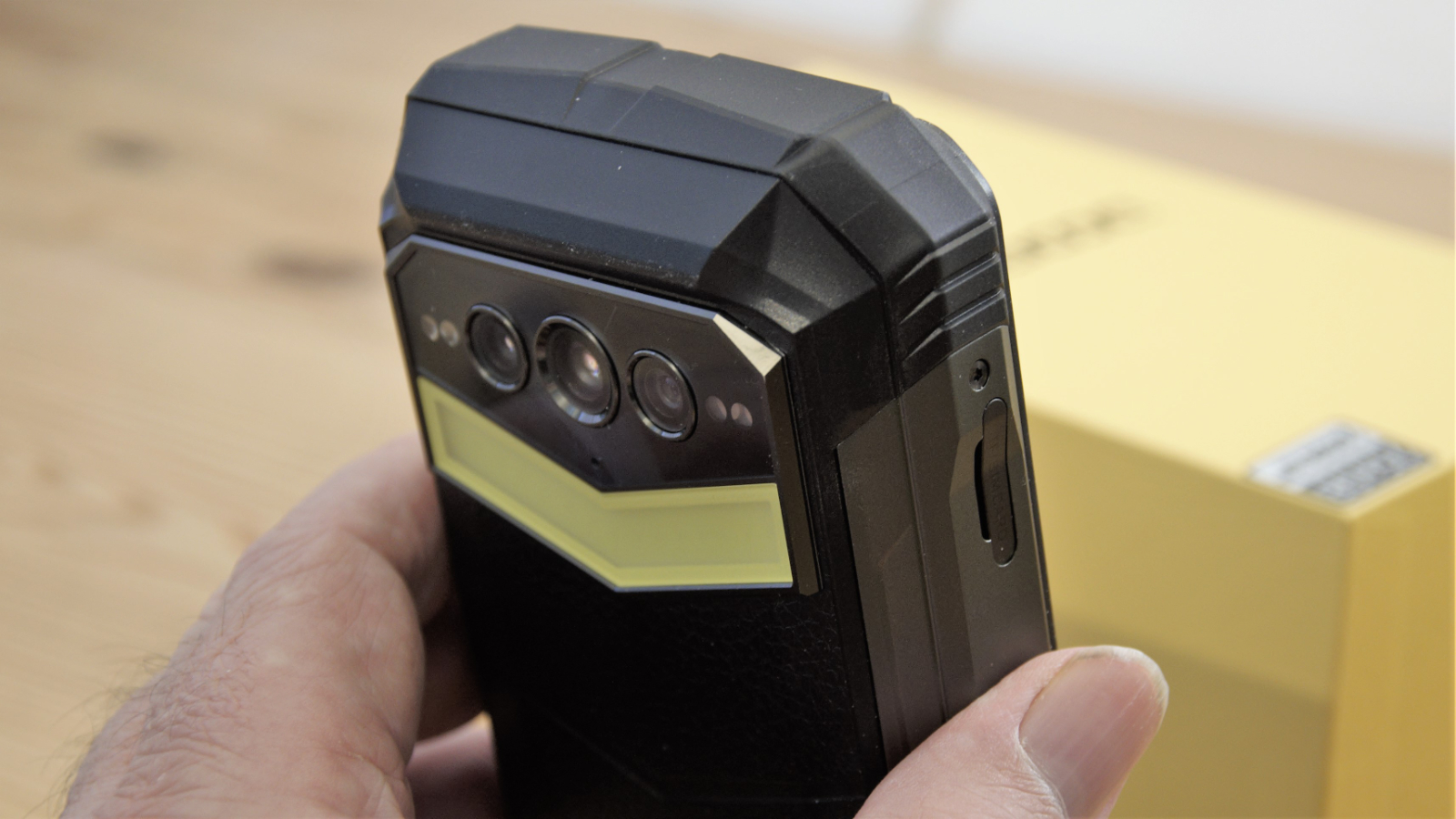
What the S100 Pro does have is a very large LED strip in the signature chevron shape that is for providing the sort of illumination that you might need camping in the wilderness. Its inclusion is helpful, and due to the amount of battery capacity on tap, using it won’t deplete the power by any significant amount.
Overall, from the outside, this is the V Max chassis repurposed with the addition of the chevron flashlight.
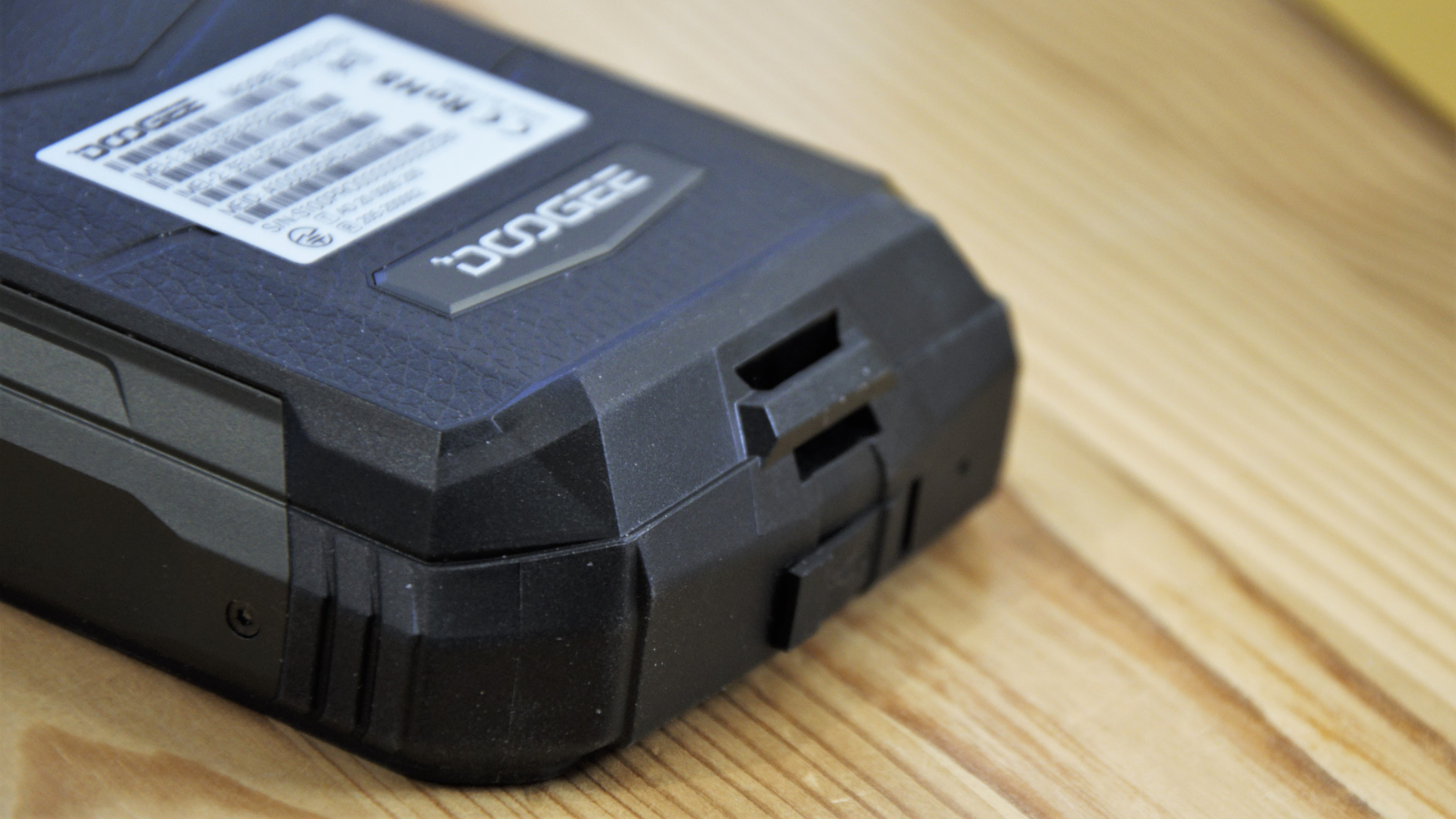
Design score: 3.5/5
Doogee S100 Pro hardware
- Decent platform
- 12GB RAM
- Modest GPU
We’ve seen the MediaTek Helio G99 SoC used in several phones over the past year, including the Blackview BV9300, UniHertz Tank and Ulefone Armor 17 Pro.
The only difference here from all those other designs is that Doogee gave the S100 Pro 12GB of RAM, not 8GB, and they also implemented the memory expansion trick where some of the storage is mapped as virtual RAM, allowing this amount to be bumped to 20GB.
The downside of this platform is that it only offers the ARM Mali-G57 MC4 GPU, which has been superseded by the Mali-G68 used on the better Dimensity powered devices. The problem with the G99 is that this silicon only supports 4G mobile services, not 5G.
Depending on where in the world you are, the lack of 5G is either a major issue or irrelevant.
One change we noticed from the S100 is that the storage is now UFS 3.1, where it was previously UFS 2.2. In theory, UFS 3.1 allows for faster communications with the flash memory, although none of our tests suggested much difference and not anything that would alter the user experience.
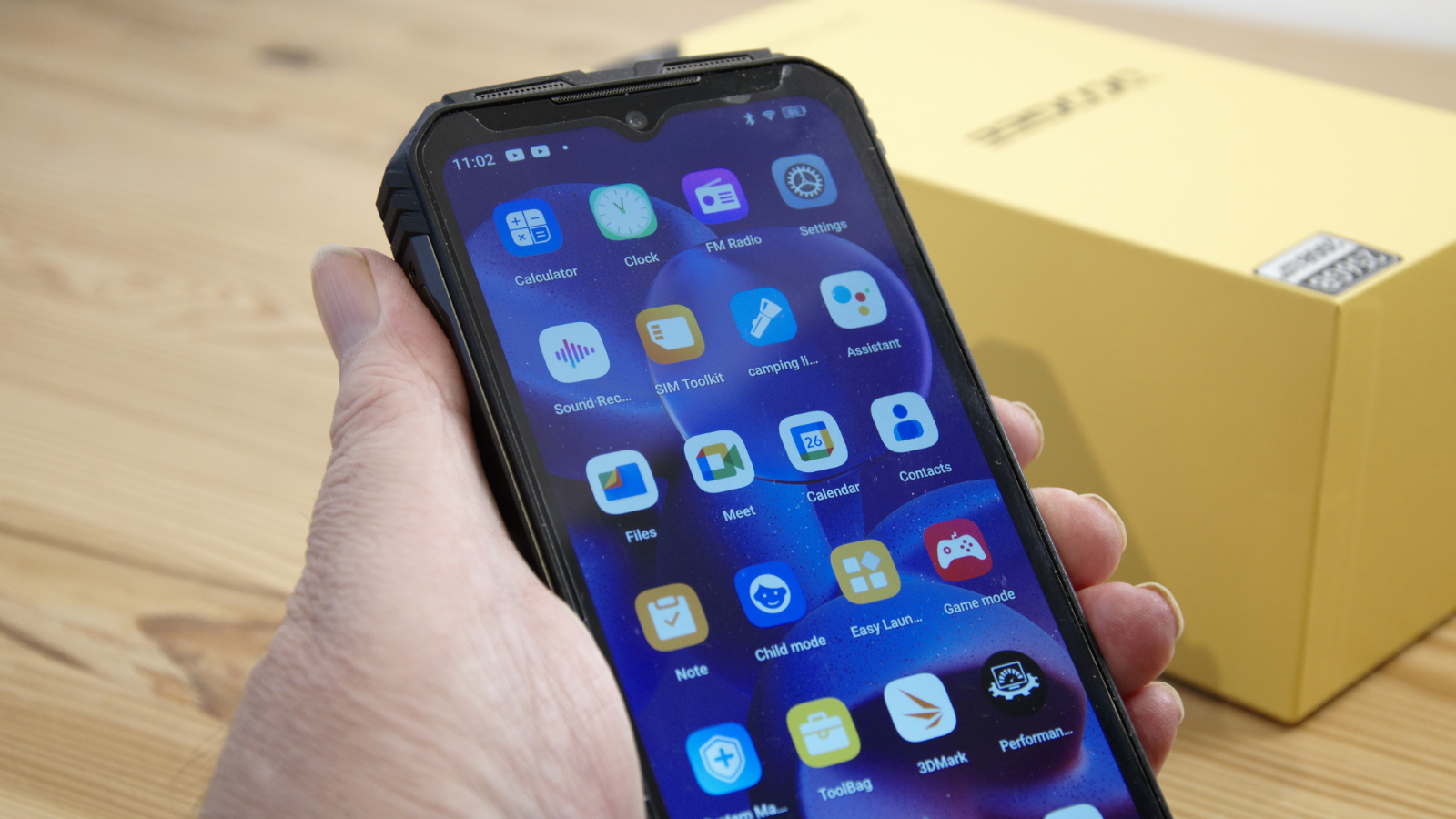
Like many rugged phone designs, the S100 Pro uses a tray that can either take dual Nano SIMs or a single SIM and a MicroSD card. This is a justification for using eSIM technology to our mind, since many people have home and work numbers but would also like to use a MicroSD card.
The screen on this phone is of good quality and appears to be the same one used on the V Max model. It’s IPS technology but a decent brightness and resolution.
However, since Doogee doesn’t support the Widevine L1 video encryption standard, anyone using a streaming service requiring L1 will only see their shows and movies in 480p resolution, not the 1080p that this panel was designed to display.
Overall, the hardware in this phone is fine, but given some of the phones we’ve seen recently, it's nothing remarkable.
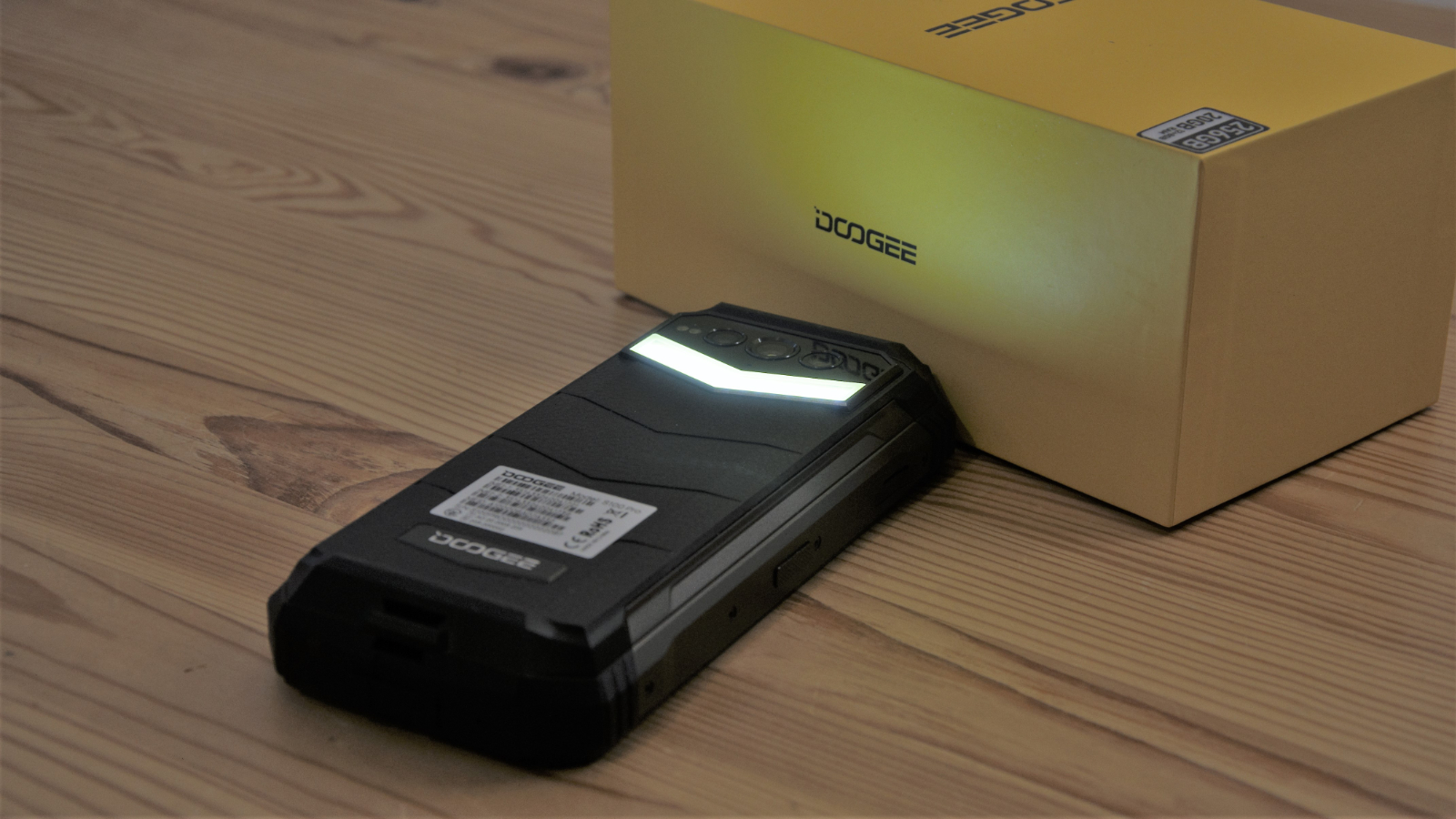
- Hardware score: 4/5
Doogee S100 Pro cameras
- 108MP sensor on the rear
- Ultrawide, night vision and thermal
- Four cameras in total
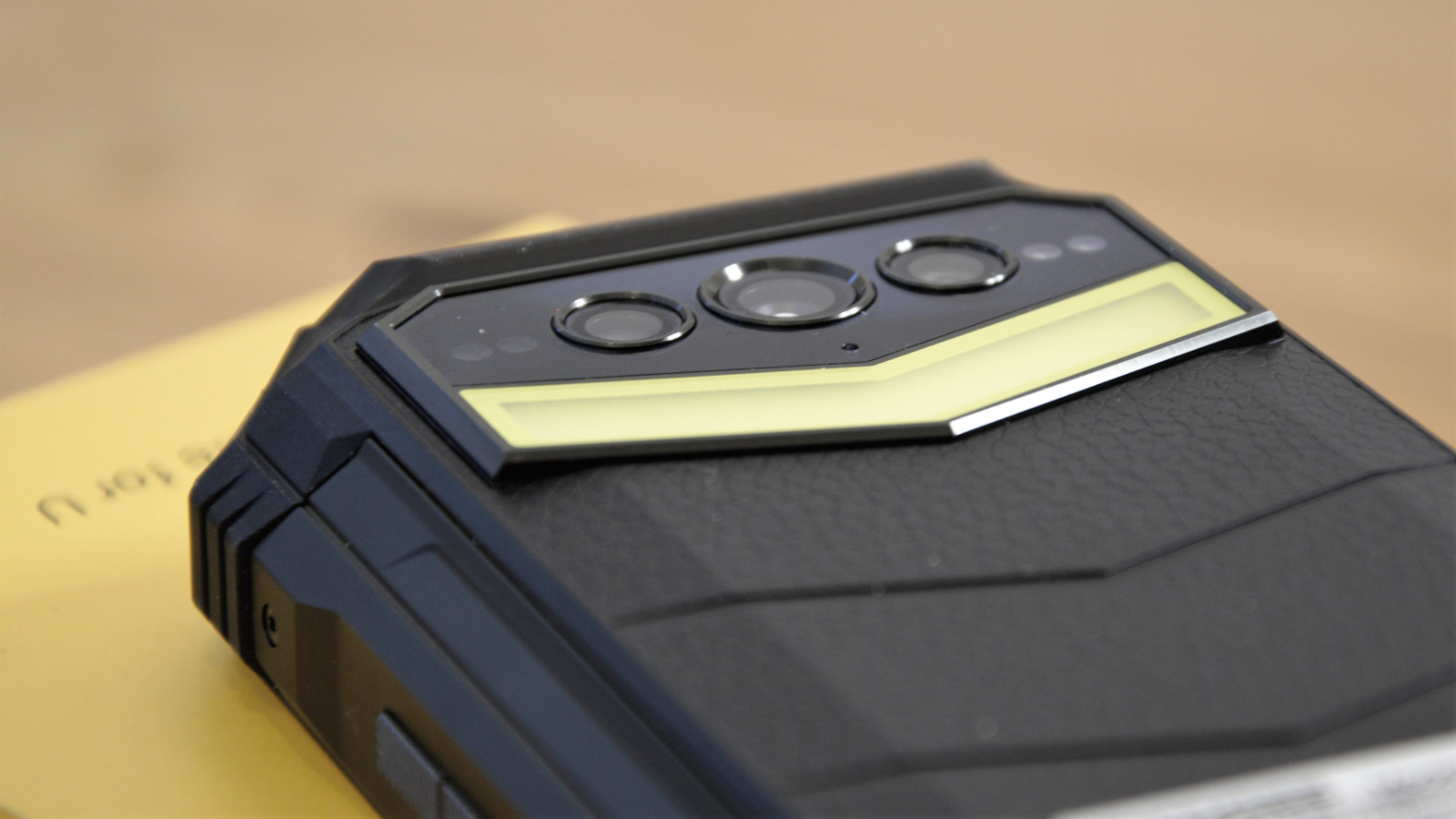
The Doogee S100 Pro has four cameras:
- Rear cameras: 108MP Samsung S5KHM2 f/1.8, (wide, 1/1.52", 0.7µm, PDAF), 16MP OmniVision OV16B10 (Ultrawide, 16 MP, f/2.2, 130˚), 20MP Sony IMX350 (Night Vision)
- Front camera: 32MP SONY IMX616 (Wide, 32 MP, f/2.0, (wide), 1/2.8", 0.8µm)
This camera cluster and the selfie camera are exactly the same as we saw in the V Max, and if you want to read more about it, then read that review.
However, and this is silly, on the V Max, the 108MP main sensor offers 4K capture, whereas the same sensor here can only achieve a maximum resolution of 1440p video.
The conclusion is that Doogee kneecapped the 108MP sensor on the S100 Pro so that the V Max had more desirable features, even if the underlying hardware was the same.
And, if you think you can get around this by installing a different camera app, think again. This Android installation only allows 1080p video from installed apps and not even the 1440p resolution that the default tool offers.
Surely phone makers should be making the most of the hardware the customer has paid for, not undermining it for some entirely artificial reasons.
This phone has excellent sensor options and can take good quality still images and video, but if Doogee wanted, it could take even better pictures with this hardware.
Doogee S100 Pro Camera samples



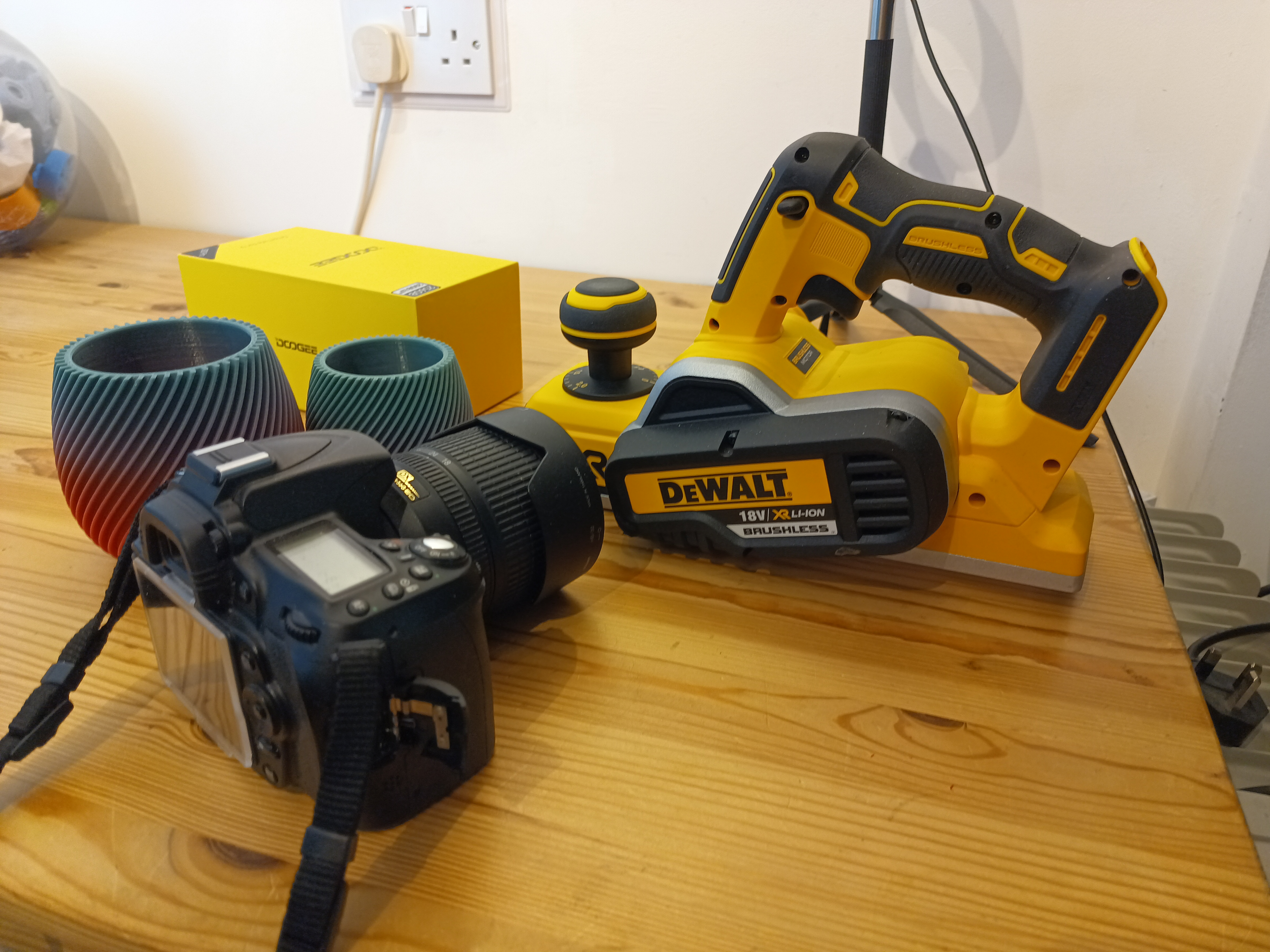



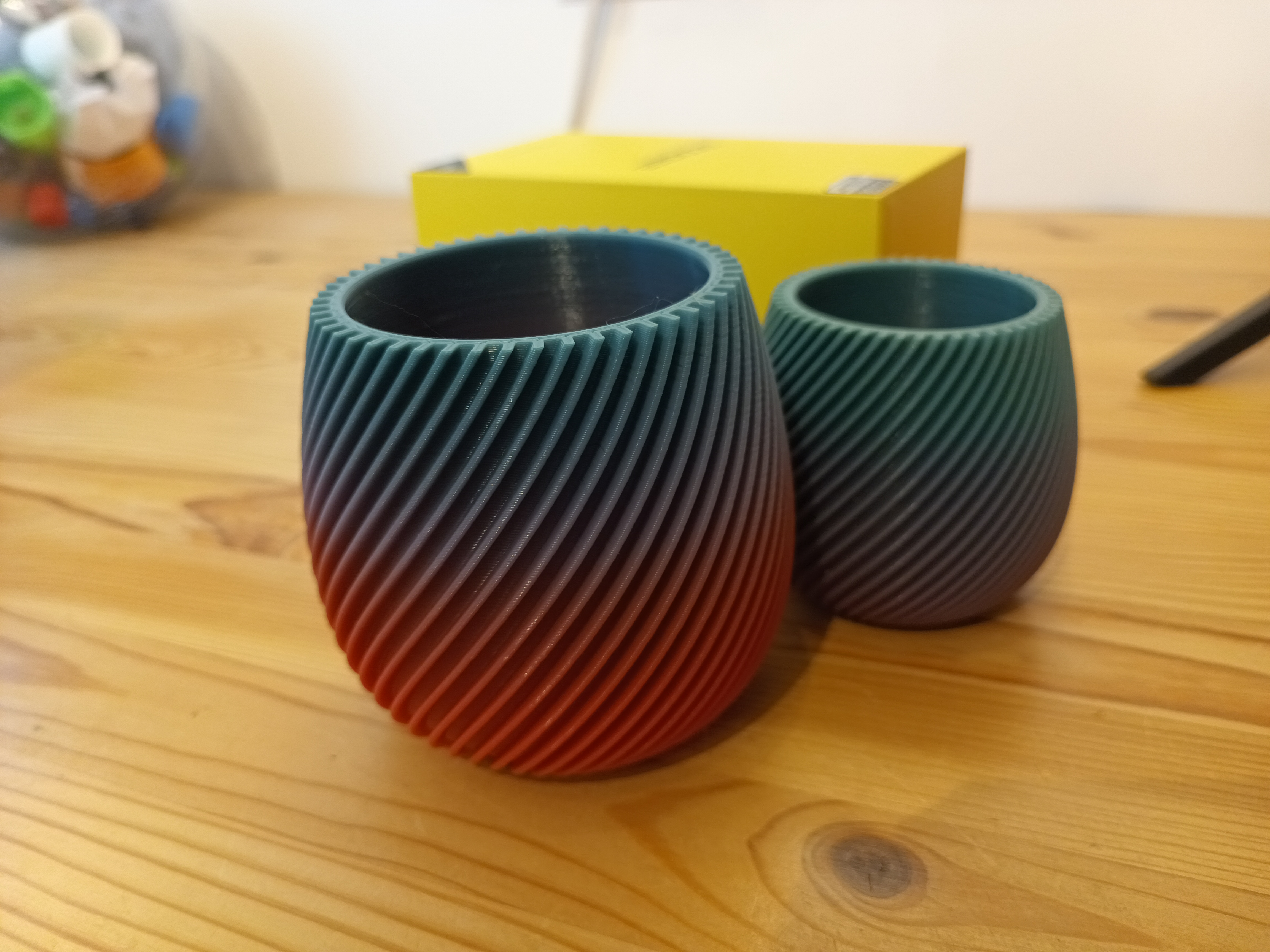


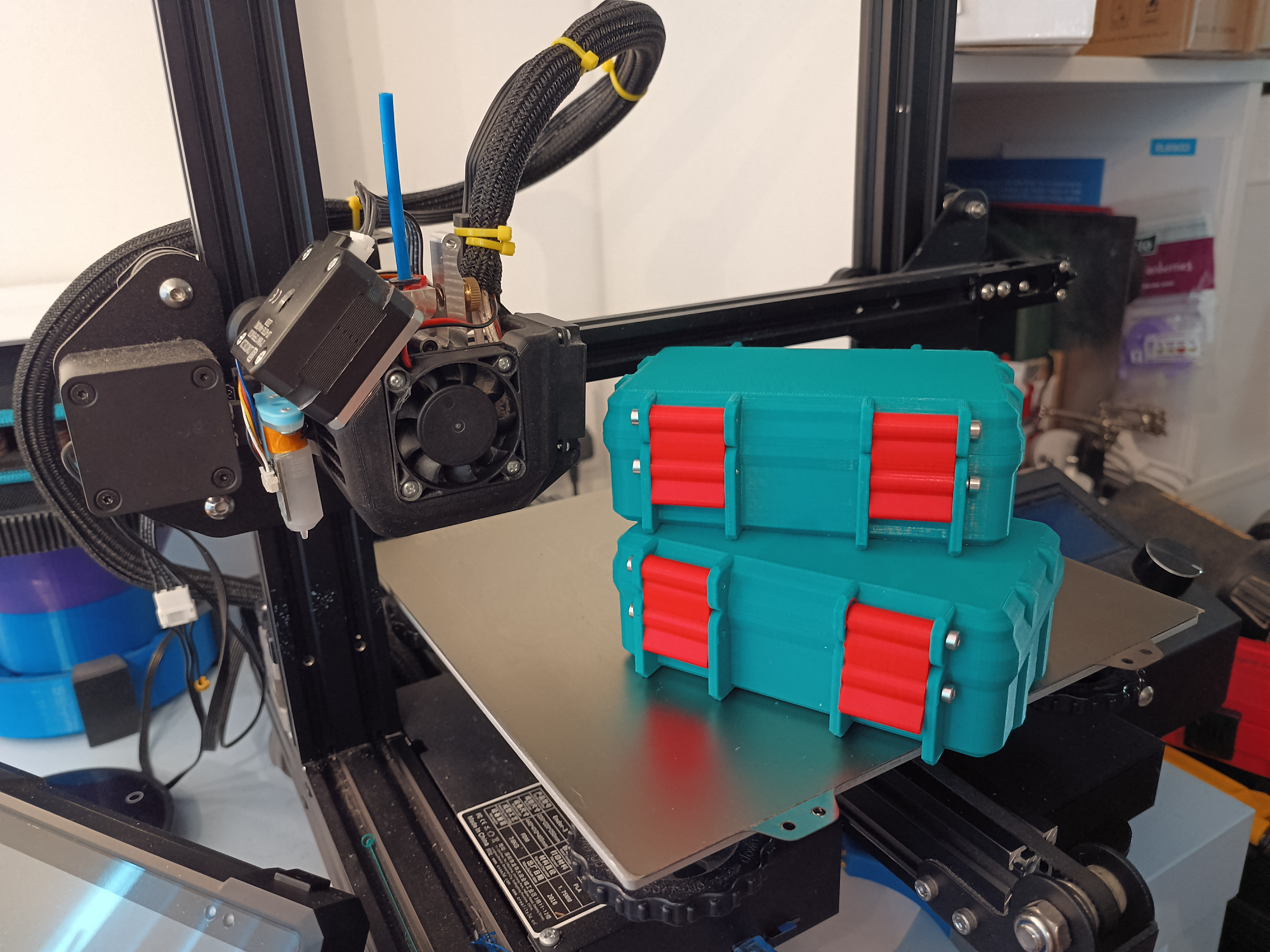
- Camera score: 3.5/5
Doogee S100 Pro performance
- Effective CPU and GPU combo
- Not Dimensity good
This is how the Doogee S100 Pro performed in our suite of benchmark tests:
Geekbench: 547 (single-core); 1821 (multi-core); 1494 (OpenCL)
PCMark (Work 3.0): 9252
Passmark: 9570
Passmark CPU: 4623
3DMark Slingshot: 3470(OGL)
3DMark Slingshot Extreme: 2581 (OGL); 2484(Vulkan)
3DMark Wild Life: 1245
To say we’ve seen these numbers before, or ones remarkably close to them, is an understatement. As we previously mentioned, the S100 Pro uses exactly the same SoC as the Blackview BV9300, UniHertz Tank and Ulefone Armor 17 Pro. All these phones have very similar results that are well within the expected variance of benchmark results.
The processor is reasonably powerful, and only the Mali-G57 GPU holds it back from being something we’d recommend for gaming. It can game, but the performance of the Dimensity powered phones and those using the new Snapdragon 8+ Gen 1 are significantly better than what the Helios G99 can deliver.
The performance of this SoC is on the wrong side of many cheaper designs now using the Dimensity 1080, like Doogee’s own V30T. While most users will be entirely happy with it, those that want plenty of power might consider trading some of that battery capacity for a phone with more processing and graphical power.
- Performance score: 3.5/5
Doogee S100 Pro battery
- 22000 mAH
- 33W Fast charging
- No wireless charging
We’ve seen several phones with 22000 mAh batteries, and the S100 Pro is the second one from Doogee with this much capacity.
The lifespan of this battery is substantial, and it could easily power the phone for a week or more.
However, the Unihertz Tank has 66W fast charging, whereas the V100 Pro and V Max only support 33W charging. For a typical phone, 33W charging is more than adequate as they generally only have 4000 or 5000 mAh batteries, not five times that amount.
Where this limitation became most striking was when we exhausted the battery and then plugged it in for a faster charge for 30 minutes. In that time, the S100 Pro only managed to recoup 5% of its total capacity, hinting at how many hours might be needed to fully recharge.
We can only conclude that the internal layout of this battery isn’t conducive to fast charging above 33W, possibly due to the heat these operations generate.
That issue undermines the massive capacity. If you can’t recharge the phone within the time most people sleep at night, then it is likely that the phone will never be fully charged.
That aspect goes some way to explaining why wireless charging isn't a feature on this phone, as it would typically be slower than wired charging.
However, we have seen 33W wireless charging on other phones, like the AGM G2, and 66W is technically possible.
Having such a big battery is great if you are operating off-grid, but making practical use of that capacity is more challenging than it should have been.
- Battery score: 3.5/5
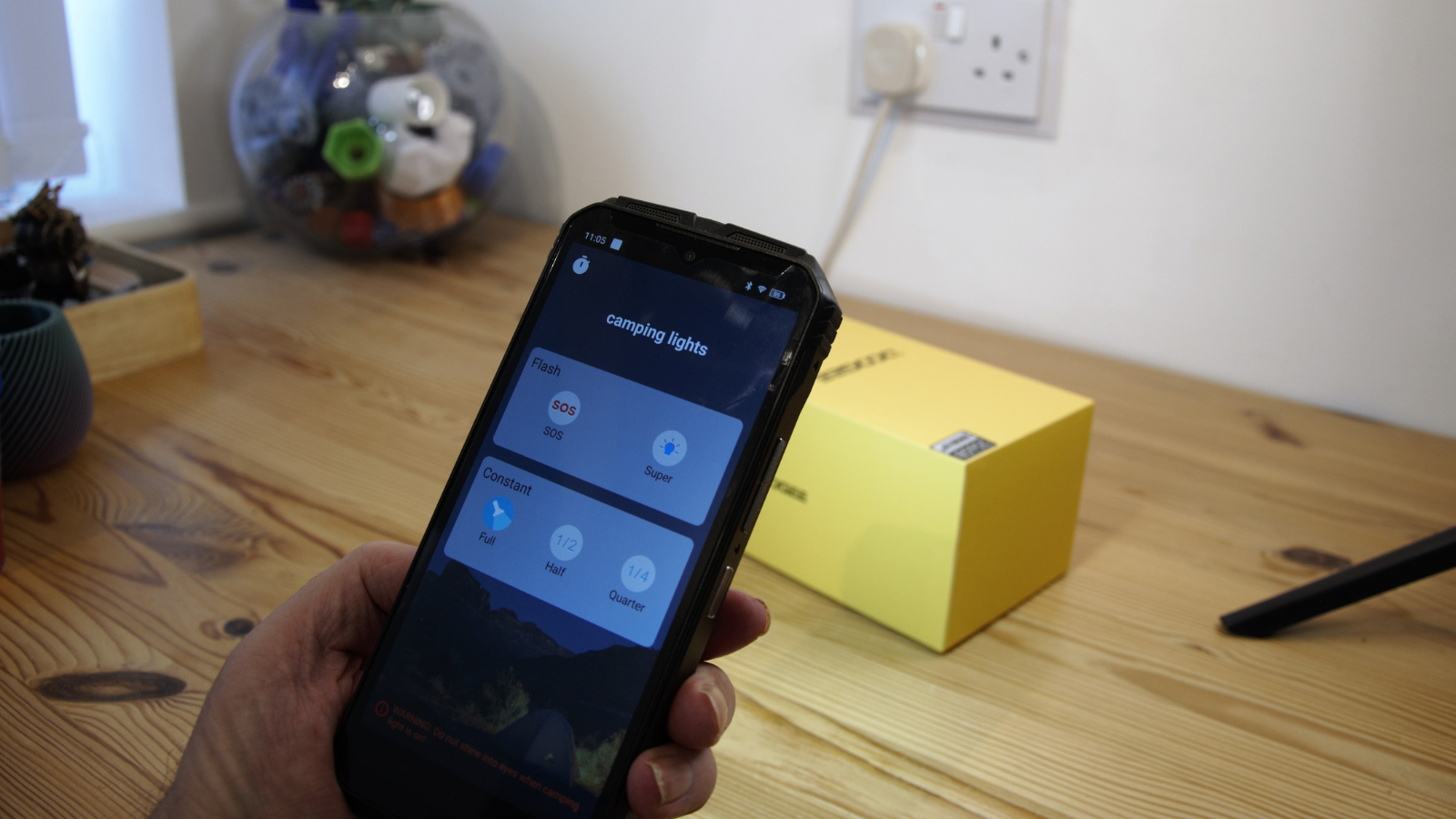
The best things about this phone are the massive battery and the relatively low price. When you factor in that it has a good phone sensor selection, some camping-friendly features like the flashlight and an effective processor, it looks like a wonderful deal.
What those headline features gloss over is how long it takes with 33W fast charging to get the battery fully recharged. What they also don’t reveal is that Doogee made the video capture worse than it could have been, and at over half a kg, this is a heavy phone to hike with.
The final problem for the Doogee S100 Pro is common to many current designs. The turnover of these phone versions is now so rapid that within six months, probably before Christmas, new models will appear with even better specifications, almost like clockwork.
That’s not to say the S100 Pro isn’t a good deal today, because it is, but how long that continues will be measured in months, not years.







